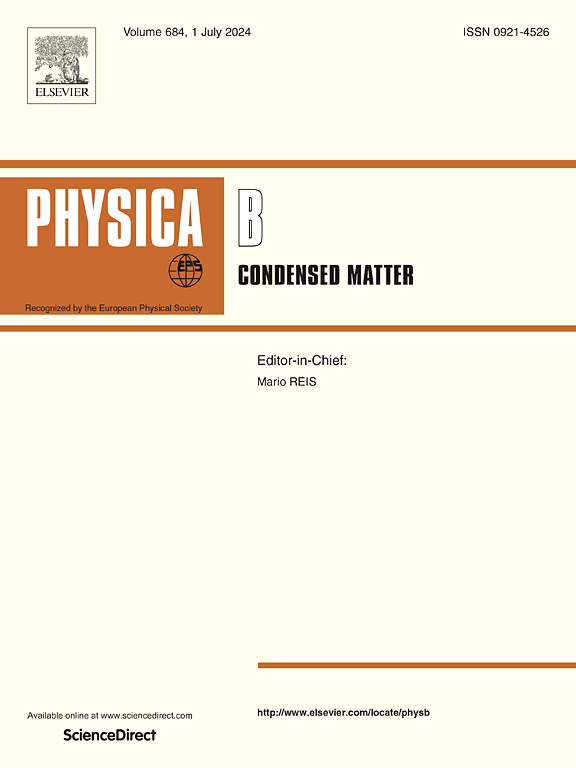High-performance ultrathin perovskite solar cells utilizing metamaterial-based frequency selective surfaces and absorbers
IF 2.8
3区 物理与天体物理
Q2 PHYSICS, CONDENSED MATTER
引用次数: 0
Abstract
Ultrathin solar cells reduce material usage to reduce toxicity, efficient photonic light-trapping is required to harvest the incident light efficiently for an insufficient absorber thickness. Simultaneously, the instability induced by rising temperatures presents an urgent challenge. This work presents a metamaterial structure in which the hyperbolic metasurface component reflect infrared light while permitting visible light to pass through, thereby lowering the internal temperature of the solar cell by 20K and enhancing its lifespan. Moreover, the metamaterials absorbers enable the absorptivitty of visible light in an ultrathin solar cell (40 nm) to increase from approximately 10 % to over 95 %, thus achieving an open-circuit current density of up to 24.79 mA/cm2, comparable to that of thick devices. The results suggest that the designed metamaterials structures are highly efficient in absorbing visible light and reflecting infrared light to enhance the performance of solar cells and have great potential for application in ultrathin solar cells.
求助全文
约1分钟内获得全文
求助全文
来源期刊

Physica B-condensed Matter
物理-物理:凝聚态物理
CiteScore
4.90
自引率
7.10%
发文量
703
审稿时长
44 days
期刊介绍:
Physica B: Condensed Matter comprises all condensed matter and material physics that involve theoretical, computational and experimental work.
Papers should contain further developments and a proper discussion on the physics of experimental or theoretical results in one of the following areas:
-Magnetism
-Materials physics
-Nanostructures and nanomaterials
-Optics and optical materials
-Quantum materials
-Semiconductors
-Strongly correlated systems
-Superconductivity
-Surfaces and interfaces
 求助内容:
求助内容: 应助结果提醒方式:
应助结果提醒方式:


